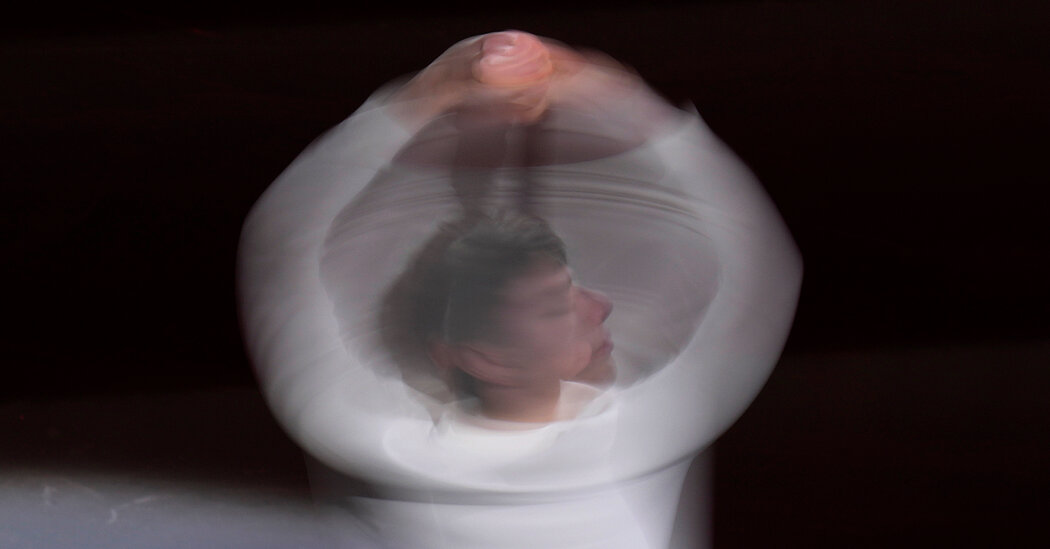How do champion skaters accomplish their extraordinary jumps and spins? Brain science is uncovering clues.
Pam Belluck is a neuroscience reporter and figure skating fan.
The recent World Figure Skating Championships produced exciting results, including a 19-year-old American landing a quadruple axel and a 40-year-old pairs skater who became the oldest woman to win a world figure skating championship. As a neuroscience reporter, I’ve wondered how the brain works when skaters jump, spin and move on the ice at whirlwind speeds. Here’s what scientists have found:
When most of us step onto an ice rink, the slipping sensation kick-starts a chain of brain signals telling the body to tilt forward to avoid falling. But repeated practice mutes that reflex for skaters like Ilia Malinin, the American who was the first person to land a quadruple axel in competition and whose 2024 World Championship free skate score was the highest ever. In such top skaters, the brain accepts the slipping feeling and rewires connections in the cerebellum, an area linked to balance.
Brain scans of speed skaters have provided more hints about the cerebellum. Studies have found that parts of the cerebellum are larger in short-track speed skaters than in non-skaters, especially the right side. That’s probably because the right side is activated when a speed skater balances on the right foot to turn left around curves in the track.
Another brain network helps skaters perform intricate routines. The basal ganglia receives signals from the motor cortex as skaters leap and twirl in the air. When skaters practice programs repeatedly, this network organizes movements into chunks and sequences, fostering quicker recall and muscle memory. In competitions, this helps skaters continue their performances even after stumbles or falls.
That brain network’s activity likely helps Nathan Chen, the 2022 Olympic champion in men’s figure skating, when he performs a quadruple lutz, one of the most difficult jumps. He starts skating backward, extending his right leg. Pushing off on his right foot, he crosses his feet while soaring upward and then rotates four times in the air. Landing on the right leg, he sweeps his left leg up behind for the finish.
The brains of figure skaters suppress the feeling of dizziness after lightning-fast spins. Spinning causes fluid in the inner ear to slosh around. In most people, it keeps sloshing for a while after the spinning stops, which causes dizziness because the brain falsely assumes rotation is continuing. Skaters’ brains learn to tell when the spin has actually stopped, allowing them to maintain their balance.
The brain’s way of adapting to rotational motion helps facilitate the extraordinary spins of skaters like Michelle Kwan, a five-time world champion known for being able to spin in both directions without pausing. In one performance, she did a left layback spin followed by a right camel spin with her leg extended, and then whirled to the left again with a sit spin that blossomed into an upright Y spin.
Photographs by Ng Han Guan/Associated Press, Mark R Cristino/EPA-EFE, via Shutterstock and Tingshu Wang Tpx/Reuters.

